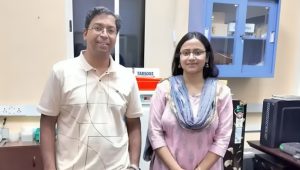In a breakthrough, Johnson & Johnson has developed an experimental pill that has shown promising results in a small human challenge trial against dengue fever. The drug is the first ever to show antiviral activity against dengue that has no specific treatments currently.
The trial, conducted in collaboration with Johns Hopkins Bloomberg School of Public Health, US, involved 10 volunteers who were administered a high dose of the pill five days before being injected with a type of dengue. They continued taking the pill for 21 days afterwards.
Remarkably, six of these participants showed no detectable dengue virus in their blood after exposure to the pathogen, nor any signs of an immune response to the infection over 85 days of monitoring.
The drug works by blocking the action of two viral proteins, thereby preventing the virus from replicating. It was well-tolerated by all trial participants, said the company after the trial. The early positive results support the ongoing Phase II trials of the pill, which is aimed at preventing the four types of dengue in real-world settings where the disease is prevalent. The next step will be testing the drug as a treatment.






















